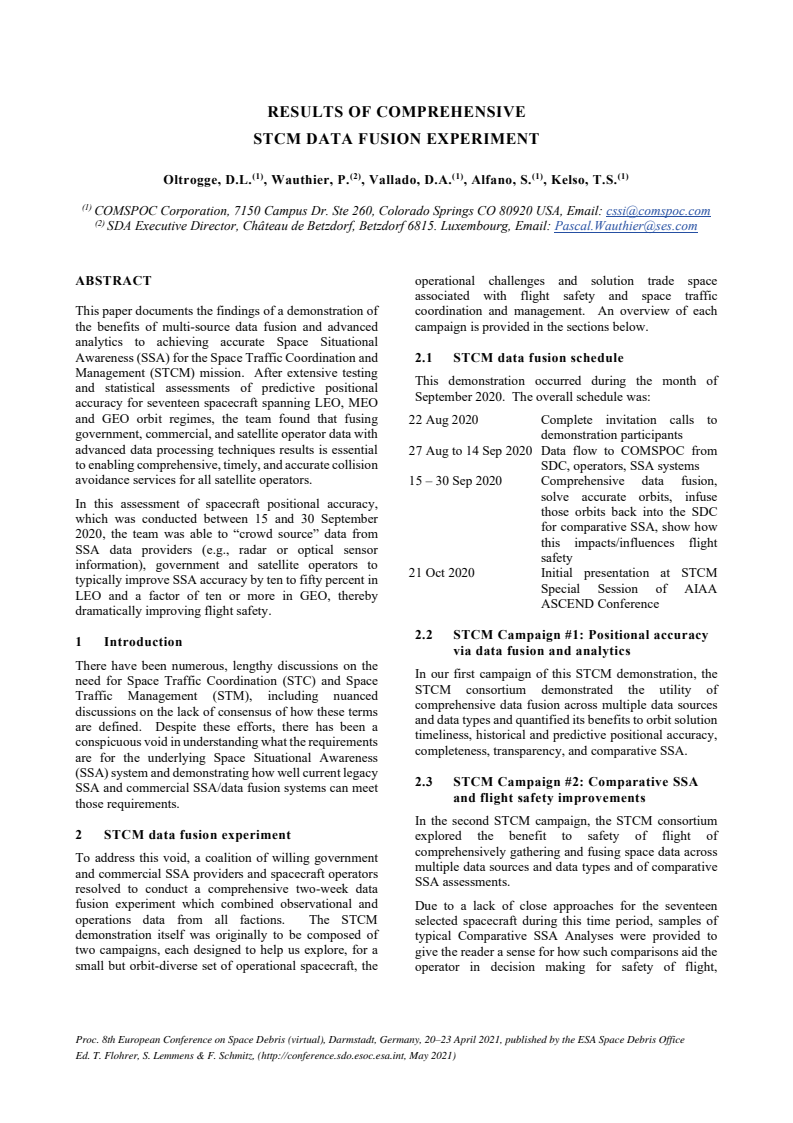Revisiting Spacetrack Report #3


Id: 288
Type: Presentation
Published: 08/21/2006
Event: AIAA/AAS Astrodynamics Specialist Conference 2002
Authors:
Click an author to filter the list of related assets below.Abstract:
Over a quarter century ago, the United States Department of Defense (DoD) released the equations and source code used to predict satellite positions through SpaceTrack Report Number 3 (STR#3). Because the DoD's two-line element sets (TLEs) were the only source of orbital data, widely available through NASA, this code became commonplace among users needing accurate results. However, end users made code changes to correct the implementation of the equations and to handle rare cases encountered in operations. These changes migrated into numerous new versions and compiled programs outside the DoD. Changes made to the original STR#3 code have not been released in a comprehensive form to the public, so the code available to the public no longer matches the code used by DoD to produce the TLEs. Fortunately, independent efforts, technical papers, and source code enabled us to synthesize a non-proprietary version which we believe is up-to-date and accurate. This paper provides source code, test cases, results, and analysis of a version of SGP4 theory designed to be highly compatible with recent DoD versions.
Citation:
Vallado, D.A., Crawford, P., Hujsak, R., and Kelso, T.S., Revisiting SpaceTrack Report #3, AAS/AIAA Astrodynamics Specialist Conference, Keystone, CO USA, 21 Aug 2006, accessible at https://comspoc.com/Resources/Content/Private/C-20220425T152134/Paper/AIAA_2006-6753%20Revisiting%20Spacetrack%20Report%203%20Rev%203.pdf.
Papers with related authors:

Results of comprehensive STCM data fusion experiment
Read More
New Consolidated Files for Earth Orientation Parameters and Space Weather Data
Read More
ORBIT DETERMINATION ISSUES AND RESULTS TO INCORPORATE OPTICAL MEASUREMENTS IN CONJUNCTION OPERATIONS
Read More
Space Traffic Coordination and Management Special Session
Read More
SSA DEGRADATION FROM LARGE CONSTELLATIONS: A STARLINK-BASED CASE FOLLOW-ON STUDY
Read More
SSA degradation from large constellations: A Starlink-based case study
Read More
Characterizing the India ASAT Debris Evolution Using Diverse, Complementary Tools
Read More

A comprehensive assessment of collision likelihood in Geosynchronous Earth Orbit
Read More
A comprehensive assessment of collision likelihood in Geosynchronous Earth Orbit
Read More
Determination of orbit cross-tag events and maneuvers with Orbit Detective
Read More
Ephemeris Requirements for Space Situational Awareness
Read More